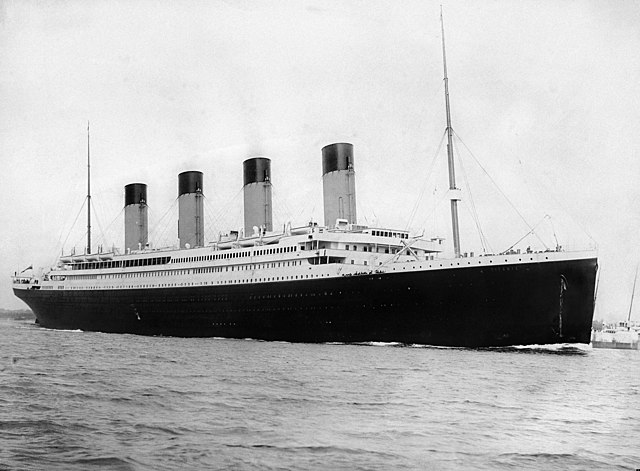Stepping through grand glass doors at the Carnegie Science Center, visitors receive a ticket and a card that reveals the persona they will embody for the day. From that moment, the exhibit whisks visitors away into the RMS Titanic’s voyage in 1912, stepping into the shoes of a passenger about to embark on an enchanting, doomed journey through time.
From Oct. 15 until April 15, the Carnegie Science Center on the North Shore of Pittsburgh presents the “TITANIC: The Artifact Exhibition,” an immersive exhibit of recreations and artifacts from the Titanic. The exhibit showcases the Titanic’s lavish interiors in various galleries, giving visitors a glimpse into its luxurious but hierarchical world.
As the exhibit continues, it guides visitors through the tragic details of the ship’s sinking, displaying items alongside images depicting how they were found in the wreckage. By simulating the cold temperatures and displaying lists of the lives lost, the exhibition allows visitors to feel the chilling reality of the Titanic’s descent into the depths of the North Atlantic Ocean on April 15, 1912.
Marcus Harshaw, senior director of museum experiences at the CSC, said the exhibition begins by introducing the construction of the Titanic and then brings the guests onto the Titanic as passengers.
“The exhibition is a very immersive experience with over 150 artifacts that put the guest in the story of the Titanic,“ Harshaw said. “The first gallery is the constructive gallery that teaches you about the engineering marvel that is the Titanic, and in the second gallery you’re transformed into the first-class cabins as they would have been on the Titanic, with jewelry and everyday items from people who were on that fateful journey.”
Harshaw said the layout of the exhibit allows visitors to understand the experience of being on the Titanic for different classes of people. Sound effects, resembling the boilers’ noises, immerse visitors into the world of third-class passengers.
“You’ll be able to think about how the journey was for different people in that time,” Harshaw said. “You’ll see the third-class steerage room and bunks and you’ll contrast how third class is a small, cramped, dingy space compared to the first-class cabin, and then you’ll visit the boiler room, which is very immersive with the sound effects and you’ll notice how that’s placed next to the third-class steerage to feel their actual experience.”
Sarah Reichle, exhibits marketing communication manager at the CSC, said the real artifacts make the exhibit feel surreal.
“Walking through the exhibition is a somber and surreal experience,” Reichle said. “Visitors will feel as if they are aboard Titanic as they travel through dramatic full-scale room re-creations and are surrounded by authentic artifacts carefully and respectfully [re]covered from the Titanic wreck site.”
Reichle said the ending of the exhibit includes an emotional memorial gallery of all the casualties of the Titanic’s sinking. She finds the ending of the exhibit particularly emotional as the artifacts bear imprints of their owners.
“The memorial gallery is a very striking part of the exhibition where you read the list of survivors and deceased,” Reichle said. “Within the room are perfume vials that still contain scents that survived the sinking and careful extraction from the ocean floor … one of these vials still emitted a beautiful rose scent. It brought those that recovered the items to tears.”
Nertil Ballanca, senior biological sciences and sociology major, said he decided to visit the exhibit with his family over Thanksgiving break. Ballanca found the exhibit informative and noted it was a fun experience for his younger sister.
“My family and I figured it would be a cute Thanksgiving break idea to bring my little sister to,” Ballanca said. “The galleries were amazing to see and the survival of so many artifacts is historically fascinating. It was also nice how my little sister didn’t know anything about the actual Titanic but had fun looking at the cool room re-creations and ice wall.”
His favorite part of the exhibit was the memorial gallery section, where he learned if the person’s story who he followed for the day survived.
“The card they gave me towards the beginning had the name of a third-class passenger,” Ballanca said. “In the memorial gallery section with all the names, there was a little machine to scan the identity card and mine said his body was never found. It was so sad finding out the person I became for the day never made it out.”
Reichle said the surviving artifacts’ retelling of the story of the Titanic is incomparable. Visitors can experience the chilling temperatures of the sinking through a cooled iceberg, offering a haunting glimpse into the cold reality of the disaster.
“The exhibition filled with authentic objects tells the real stories of Titanic better than any movie or book,” Reichle said. “You’ll see personal items, feel the temperature of the water the fateful night through a cooled simulated iceberg and examine perfume vials still filled with scents that survived a traumatic event.”


